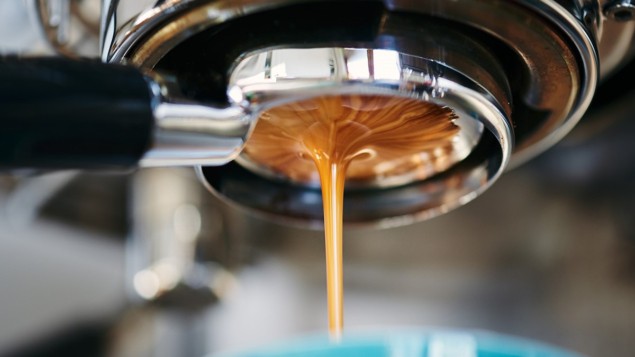
OK, I know that asking how to make a better cup of coffee will often result in a tedious argument about the relative merits of various appliances, beans and grinds. Now, researchers at the University of Huddersfield in the UK have weighed in with a study of the physics of coffee making. In particular they looked at a curious feature of espresso makers – which force hot water through a cylindrical filter containing finely ground coffee.
In 2020, researchers discovered that using a finely ground coffee can sometimes produce a weaker tasting cup than using coffee ground to a larger particle size. This seems odd because the surface-to-volume ratio of a finer grind is greater than that of a coarser grind, so I would have thought that more flavour would be extracted from the finer grind.
William Lee and his Huddersfield colleagues reckoned that effect is caused by the uneven extraction of coffee from different regions within an espresso filter. To investigate this hypothesis, the team did computer simulations of a simplified system that comprised two different coffee-making regions through which water can flow. The coffee was packed at two different densities in either region to simulate the variations that would occur in a real-life filter.
Dynamic extraction
They found that the difference in density along with the dynamic extraction of coffee led to different flow rates in each region.
“Our model shows that flow and extraction widened the initial disparity in flow between the two regions due to a positive feedback loop, in which more flow leads to more extraction, which in turn reduces resistance and leads to more flow,” explains Lee.
One consequence of this phenomenon is that coffee is not fully extracted from one region before all the water has flowed through it. And, the amount of this unextracted coffee increases with decreasing particle size.
Active effect
“This effect appears to always be active, and it isn’t until one of the regions has all of its soluble coffee extracted that we see the experimentally observed decrease in extraction with decreasing grind size.”
The researchers believe that gaining a better understanding of this effect could lead to a better cup of coffee – as well as reducing waste. This is because there is an optimal way to extract coffee from grounds. If the grounds are exposed to too little water, the taste of the coffee is what experts call “underdeveloped”. However, if the grounds are exposed to too much hot water, the taste becomes overly bitter. So even if the overall level of coffee extraction seems fine, the resulting beverage could be a combination of these two less desirable fluids.
You can read more in Physics of Fluids.
Quantum LEGO
There has already been a LEGO Large Hadron Collider, a LEGO James Webb Space Telescope and even a LEGO Kibble balance, but now a LEGO quantum computer can be added to the list. LEGO user SupersonicEmmet098 has created a 403-piece “IBM Q Quantum Computer System” set and uploaded the design onto the LEGO ideas website where it already has over 150 supporters.
With a scale of 1 to 18, the design features a light-blue IBM server cabinet of microwave electronics with a Bluefors cryostat support frame suspending a golden dilution refrigerator with an IBM 433-qubits Osprey quantum processor at the bottom.
“Kids and adults alike can use this LEGO set to discover and learn about the composition of a quantum computer system while recreating a slice of a real-life quantum computer data centre,” notes SupersonicEmmet098, who will now be hoping to hit the next supporter milestone of 1000 votes.
- SEO Powered Content & PR Distribution. Get Amplified Today.
- PlatoAiStream. Web3 Data Intelligence. Knowledge Amplified. Access Here.
- Minting the Future w Adryenn Ashley. Access Here.
- Buy and Sell Shares in PRE-IPO Companies with PREIPO®. Access Here.
- Source: https://physicsworld.com/a/the-physics-of-espresso-coffee-build-a-lego-quantum-computer/



